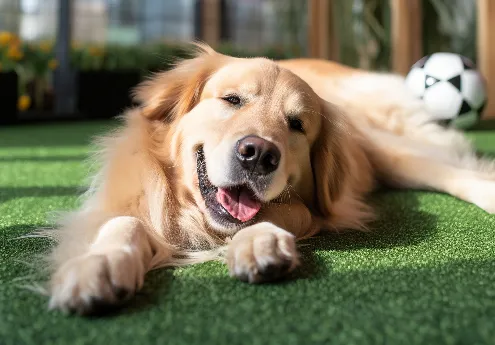
- Afrikaans
- Arabic
- Belarusian
- Bengali
- Czech
- Danish
- Dutch
- English
- Esperanto
- Estonian
- Finnish
- French
- German
- Greek
- Hindi
- Hungarian
- Icelandic
- Indonesian
- irish
- Italian
- Japanese
- kazakh
- Rwandese
- Korean
- Kyrgyz
- Lao
- Latin
- Latvian
- Malay
- Mongolian
- Myanmar
- Norwegian
- Persian
- Polish
- Portuguese
- Romanian
- Russian
- Serbian
- Spanish
- Swedish
- Tagalog
- Tajik
- Thai
- Turkish
- Turkmen
- Ukrainian
- Urdu
- Uighur
- Uzbek
- Vietnamese
sports grass artificial
Nov . 24, 2024 18:46 Back to list
The Rise of Artificial Grass in Sports A Comprehensive Overview
In recent years, the world of sports has witnessed a significant transformation with the increasing use of artificial grass. This innovative solution has not only changed the way sports are played but has also addressed various environmental, economic, and maintenance concerns. Its popularity is on the rise across a range of sports, from soccer to golf, and understanding its benefits and challenges is essential as this trend continues to evolve.
Benefits of Artificial Grass
One of the primary advantages of artificial grass is its durability. Unlike natural grass, which can be easily damaged by heavy foot traffic, adverse weather conditions, or pest infestations, synthetic turf remains resilient. It can withstand the rigors of daily use without losing its quality, making it an ideal choice for sports facilities that host numerous events or practices. The long lifespan of artificial grass also translates to lower replacement costs, providing significant savings for schools, clubs, and professional organizations.
Another important benefit is the decreased maintenance required for artificial grass. Natural lawns demand continual upkeep, including mowing, watering, aerating, and treating for pests and diseases. In contrast, synthetic surfaces require minimal maintenance, primarily involving cleaning and occasional infill replacement. This reduction in maintenance not only saves time and labor costs but also conserves water, which is becoming an increasingly critical concern in many regions grappling with drought.
Artificial grass also provides a consistent playing surface. Natural grass can be affected by weather conditions, resulting in muddy fields after rain or hard ground during dry spells. Such inconsistencies can impact player performance and increase the likelihood of injuries. However, synthetic turf remains uniform in quality, ensuring that athletes can perform at their best no matter the weather. This consistency attracts both amateur and professional teams to invest in high-quality artificial grass fields.
Environmental Considerations
sports grass artificial

While there are many benefits to artificial grass, it is crucial to address the environmental implications associated with its use. One frequently raised concern is the composition of synthetic turf, which often includes non-biodegradable materials. However, many manufacturers are now producing eco-friendly alternatives that incorporate recycled materials or are designed to be recyclable at the end of their lifespan.
Additionally, while the installation of artificial grass typically requires a significant upfront investment, the long-term savings in maintenance and water use can lead to lower environmental footprints over time. Schools and sports clubs that switch to synthetic surfaces often find that they can channel the resources saved into other sustainable practices, such as improving coaching staff or enhancing community programs.
Challenges and Critiques
Despite its numerous advantages, artificial grass is not without its critics. Concerns about heat retention on synthetic surfaces have surfaced, especially in regions with hot climates. Studies have indicated that artificial turf can reach temperatures significantly higher than natural grass, leading to uncomfortable and potentially dangerous playing conditions. To address this issue, manufacturers are developing innovative cooling technologies and using heat-reflective materials in the production of synthetic turf.
There is also ongoing debate regarding the safety of infill materials used in artificial grass. Some types of infill, such as crumb rubber from recycled tires, have faced scrutiny over potential health risks. Regulatory bodies and sports organizations continue to evaluate the safety of these materials, encouraging manufacturers to seek safer alternatives and maintain transparency about their products.
Conclusion
In conclusion, artificial grass is revolutionizing the landscape of sports, offering robust solutions for durability, maintenance, and uniform playing conditions. While concerns regarding environmental impact and player safety remain, advancements in technology and manufacturing practices are addressing these issues head-on. As the demand for synthetic surfaces grows, it is essential for stakeholders in the world of sports to weigh the benefits against potential challenges, ensuring that the transition to artificial grass serves not only the sport but also the athletes and the environment. As this trend continues to permeate the sports industry, the dialog surrounding artificial grass will undoubtedly evolve, shaping the future of sports play for generations to come.
-
The Benefits of Artificial Turf for Indoors
NewsJul.15,2025
-
How Artificial Grass Suppliers Ensure Quality Products
NewsJul.15,2025
-
Artificial Grass and Pets: A Space for Relaxation
NewsJul.08,2025
-
Balcony & Outdoor Decoration with Artificial Grass
NewsJul.08,2025
-
Best Indoor Artificial Grass for Home
NewsJul.07,2025
-
Best Pet Turf for Dogs: Safe & Durable Artificial Grass Options
NewsJul.07,2025
Products categories









